Ancient China
The Ancient World
Windmemories, CC BY-SA 4.0
The history of China is measured in dynasties, or hereditary monarchies that ruled for centuries at a time. The first dynasty was the legendary Xia Dynasty, which was long considered mythical, although evidence of a Bronze Age civilization in China continues to be discovered.
According to legend, the invention of music in China is attributed to a court scholar named Ling Lun, commanded by the Yellow Emperor Huang Ti (who reigned before even the Xia) to craft pipes and bells to mimic the sounds of birds so that they would be in harmony with the universe. Their lengths were crafted in accordance with the harmonic series, establishing a pentatonic tonal system.
More established historical records attest to the Shang Dynasty, which lasted from the 17th to 10th centuries BC. It existed at the same time as Babylon, Assyria, Davidic Israel, and the Egyptian New Kingdom, but was somewhat less urbanized. The final Shang king, Di Xin, was a tyrant. He was overthrown by one of his generals, Wu, who established the Zhou Dynasty. Di Xin set fire to his palace and locked himself inside.
Musical instruments in China were categorized into eight groups, depending on the material of which they were made: stone, earth, bamboo, metal, skin, silk, wood, and gourd. The most common materials were silk and bamboo, forming a genre called sizhu.
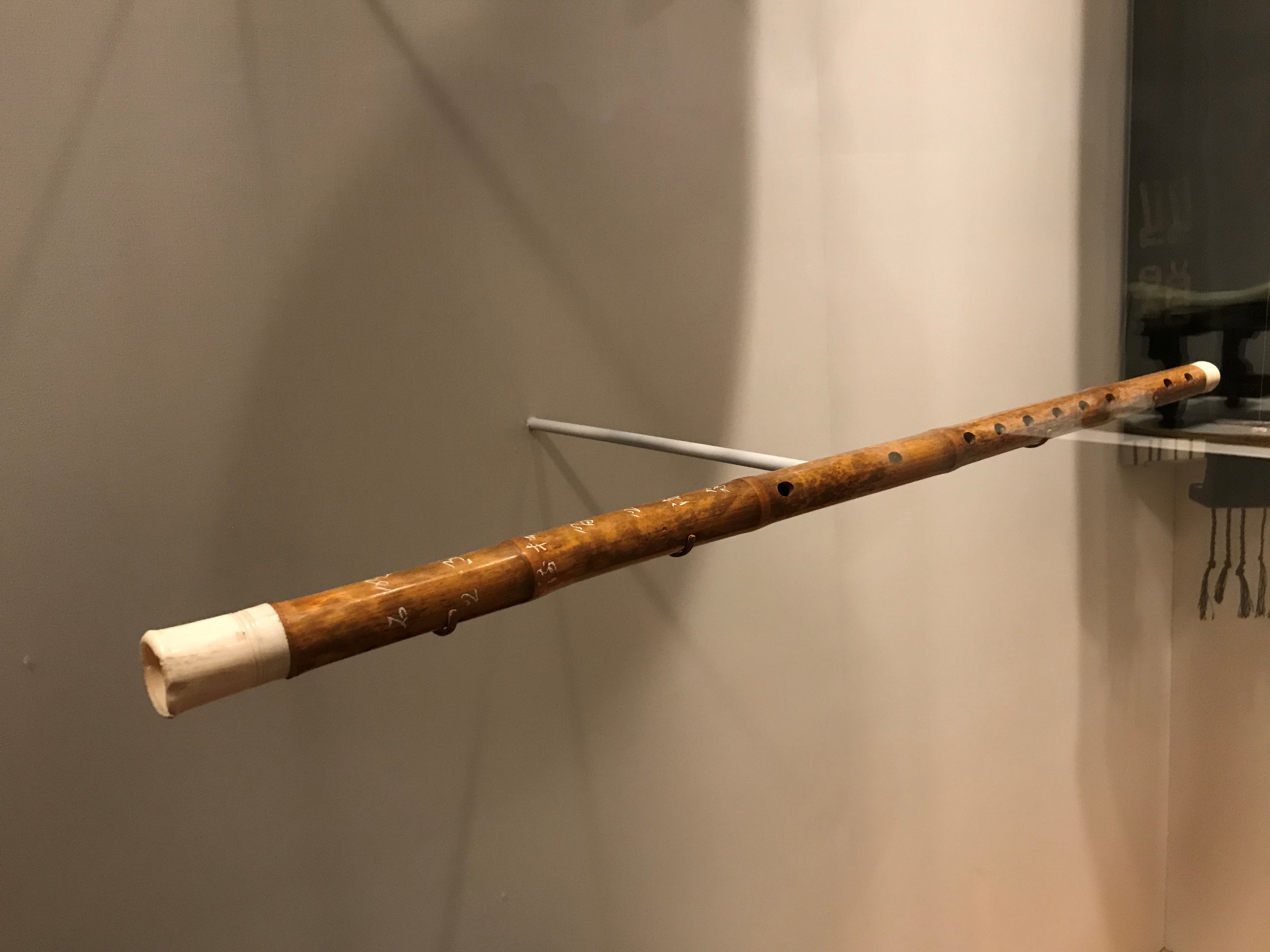
Dizi
The dizi is a transverse flute with a membrane-covered hole that produces a unique buzzing tone.
Guanzi
A guanzi is a loud double-reed instrument formed from a simple wooden tube. In China, is is commonly used in ritual music (such as weddings and funerals) as well as in opera and folk music.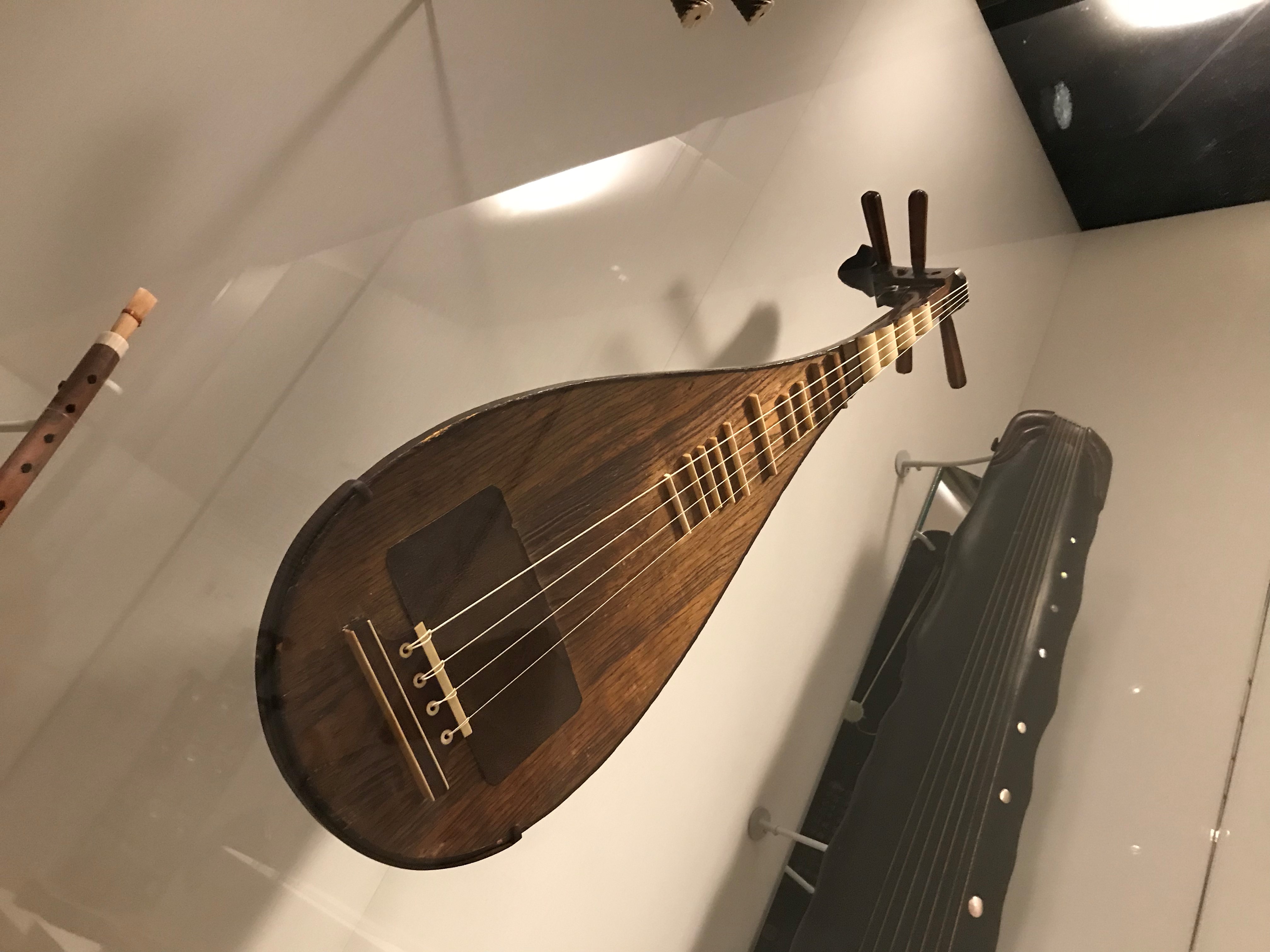
Pipa
Pipas are plucked-string lutes similar to guitars, used in opera and narrative-singing ensembles.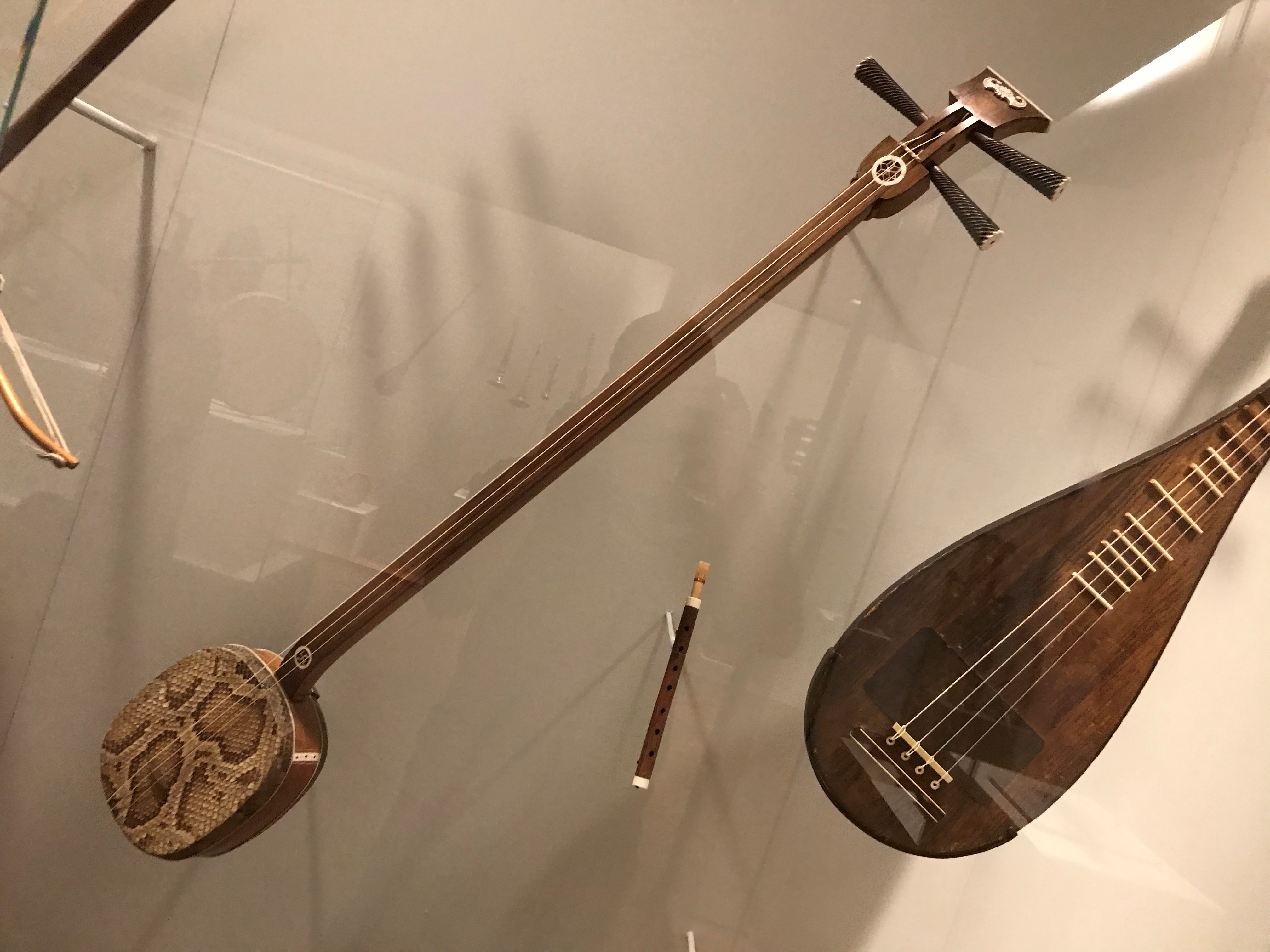
Sanxian
The sanxian is a plucked chordophone similar to a banjo or guitar. It is used in folk music or to accompany singing, and is sometimes fitted with an interior metal plate to enhance the sound.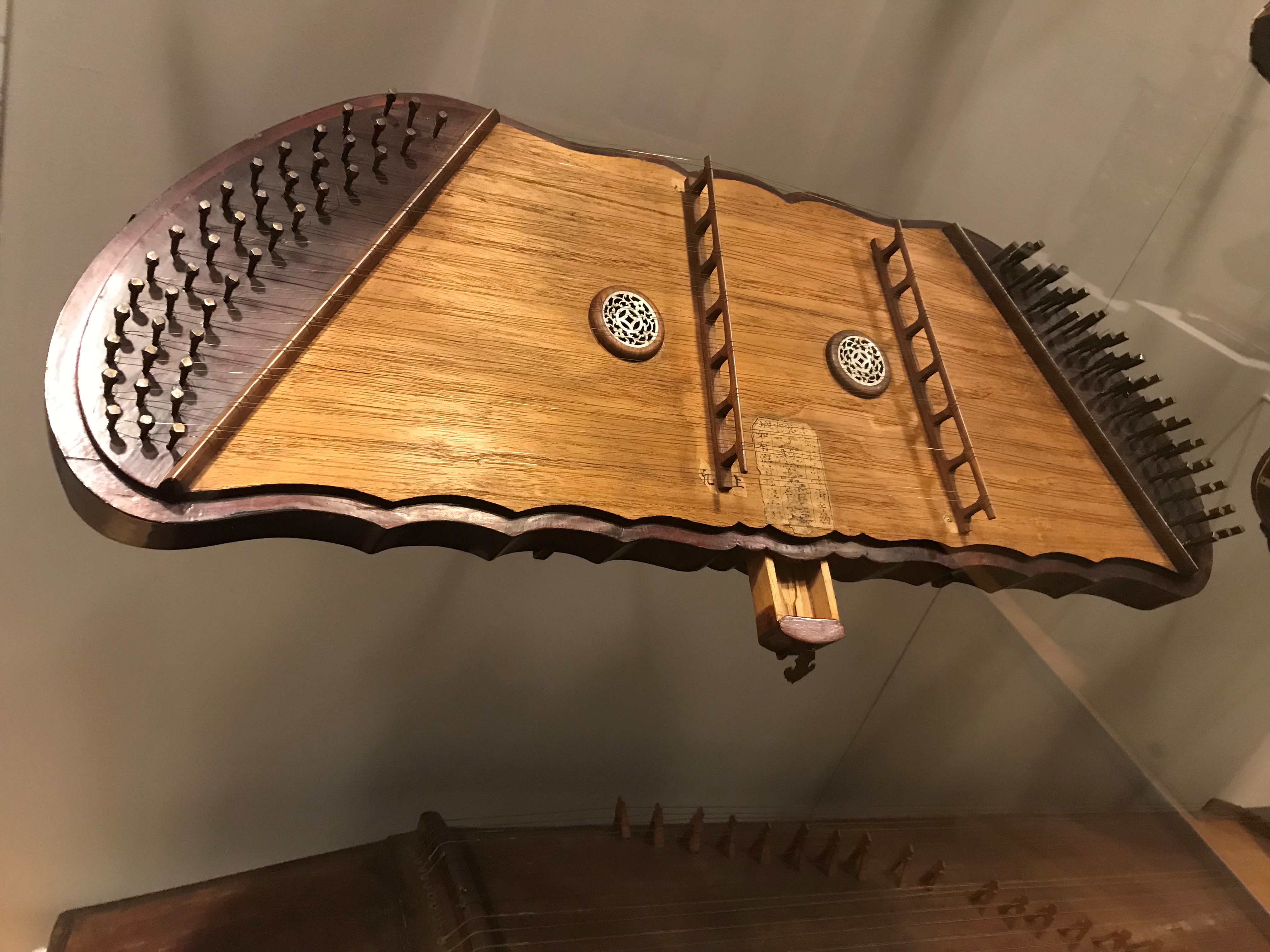
Yangqin
The yangqin is a dulcimer played with bamboo mallets, which produce a metallic sound on its copper/steel strings.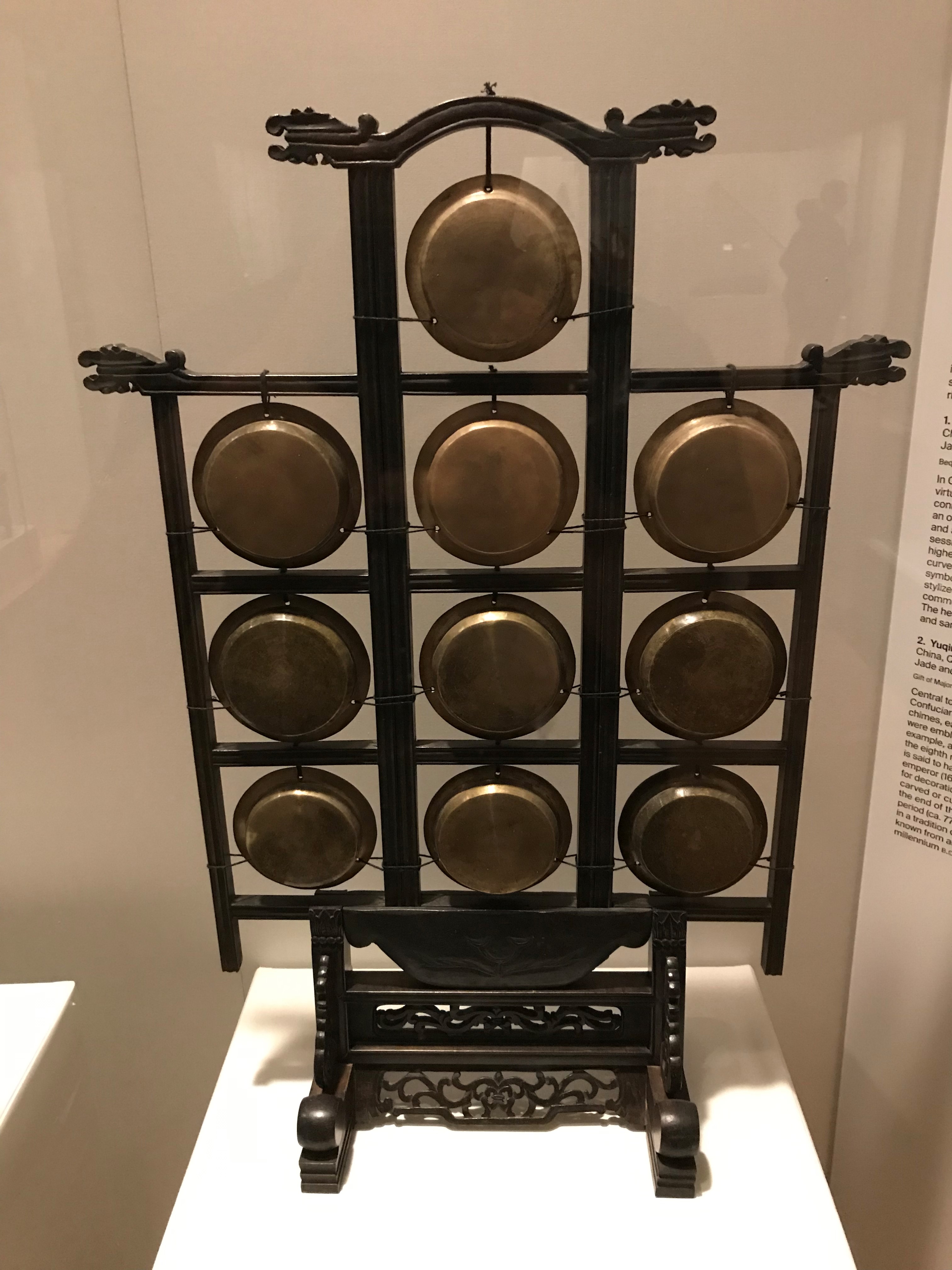
Yunluo
The yunluo or "Cloud Gong" consists of ten small gongs, each of a varying thickness, which gives them all distinct pitches. It was originally used in Confucian court ceremonies, but its use expanded to more commonplace ritual music as well.The Zhou Dynasty lasted for nearly eight hundred years and was the height of the Bronze Age in China. It waning years were called the Spring and Autumn Period, named after an historical chronicle of the time. Centralized power declined, but some of China's most important scholars flourished: Sun-Tzu wrote The Art of War, Laozi founded Taoism with the Tao Te Ching, and Kong Fu Tzu (more commonly known by his Latinized named "Confucius") authored many works, most importantly the Analects.
As the Zhou Dynasty finally collapsed, regional powers grew more independent and often came into conflict with one another. Eventually seven different states - the Qin, Han, Wei, Chu, Zhao, Yan, and Qi - emerged in a struggle for control of China, leading to the Warring States Period.
